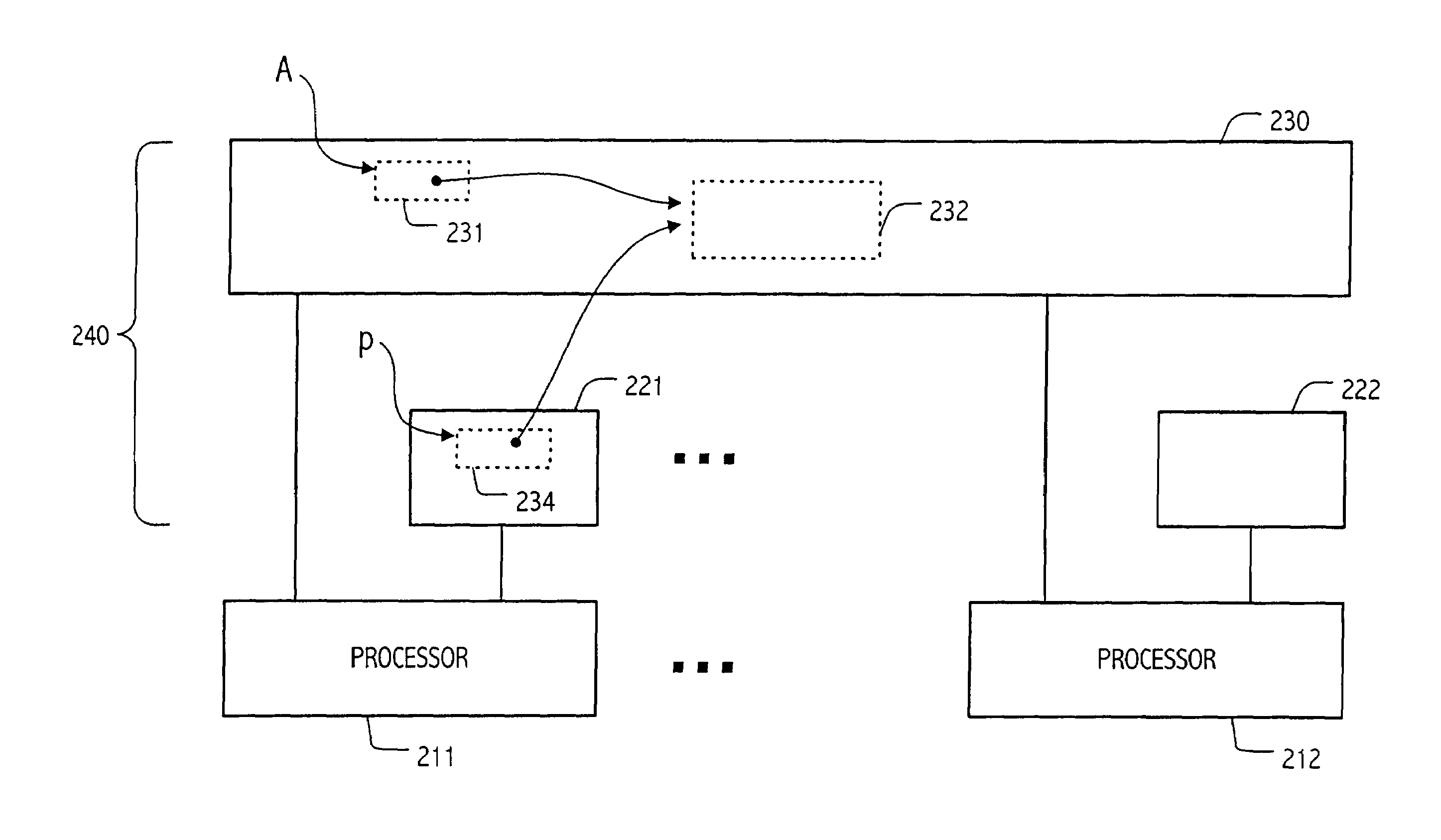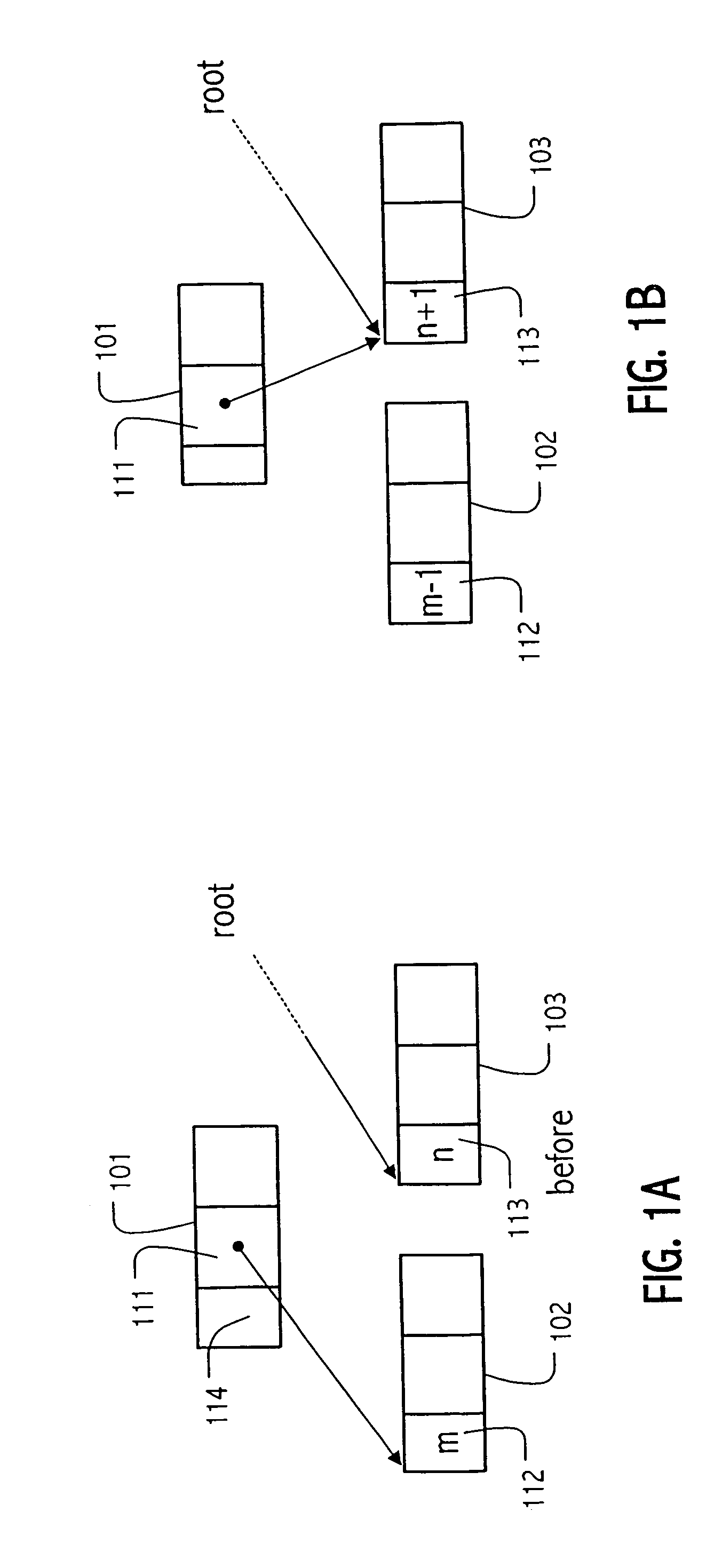Lock free reference counting
- Summary
- Abstract
- Description
- Claims
- Application Information
AI Technical Summary
Benefits of technology
Problems solved by technology
Method used
Image
Examples
example
Transformation of a Concurrent Deque Implementation
[0072]In this section, we show how to use our methodology to construct a GC-independent implementation of a concurrent double-ended queue (deque) object, based on a GC-dependent implementation presented in greater detail in U.S. Patent Application Publication No. U.S. 2001 / 0056420 A1, entitled “LOCK-FREE IMPLEMENTATION OF CONCURRENT SHARED OBJECT WITH DYNAMIC NODE ALLOCATION AND DISTINGUISHING POINTER VALUE,” naming Guy L. Steele Jr., Alexander T. Garthwaite, Paul A. Martin, Nir N. Shavit, Mark S. Moir and David L. Detlefs as inventors, and filed on even date herewith. The description, in the above-identified U.S. patent application Publication, of a deque object implementation (including supporting data structure representations and access operations) suitable for use in a garbage-collected storage environment is incorporated herein by reference in its entirety. Hereafter, a class of implementations patterned on such techniques is ...
PUM
 Login to View More
Login to View More Abstract
Description
Claims
Application Information
 Login to View More
Login to View More - R&D
- Intellectual Property
- Life Sciences
- Materials
- Tech Scout
- Unparalleled Data Quality
- Higher Quality Content
- 60% Fewer Hallucinations
Browse by: Latest US Patents, China's latest patents, Technical Efficacy Thesaurus, Application Domain, Technology Topic, Popular Technical Reports.
© 2025 PatSnap. All rights reserved.Legal|Privacy policy|Modern Slavery Act Transparency Statement|Sitemap|About US| Contact US: help@patsnap.com



